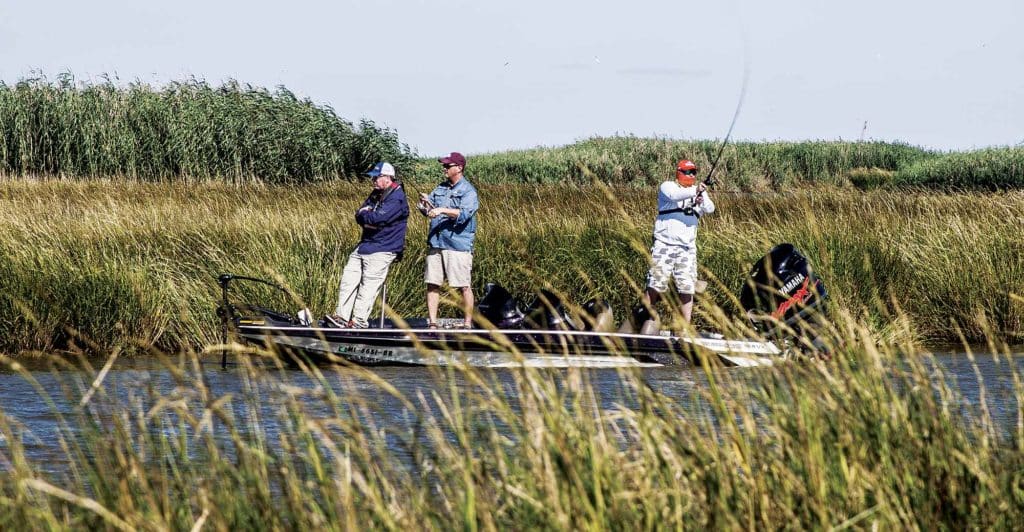
Gusts to 25 knots out of the southwest stacked 2-foot waves atop 3-footers. What should have been a beautiful late fall day was quickly becoming a misery trip as torrents of salt water blew over the bow with the frequency of a punk-rock drumbeat.
My wife released her white-knuckle death grip on the console rail just long enough to punch me in the shoulder. She started to yell what surely would’ve been an expletive when she was cut short by a curtain of Chesapeake Bay brine.
“Trust me,” I shouted over the wind blast. “Three more minutes of this and we’ll be in the clear.”
By “in the clear” I meant that we’d round Point Lookout into the lee, and the wave height would drop by two-thirds. I certainly didn’t mean to imply I’d be clear of her wrath — it was obviously too late for that. But the second shoulder punch told me that she didn’t quite realize what I meant: Being in the lee of a point of land versus being on the windward side can make the difference between utter misery and fishing in relative comfort.
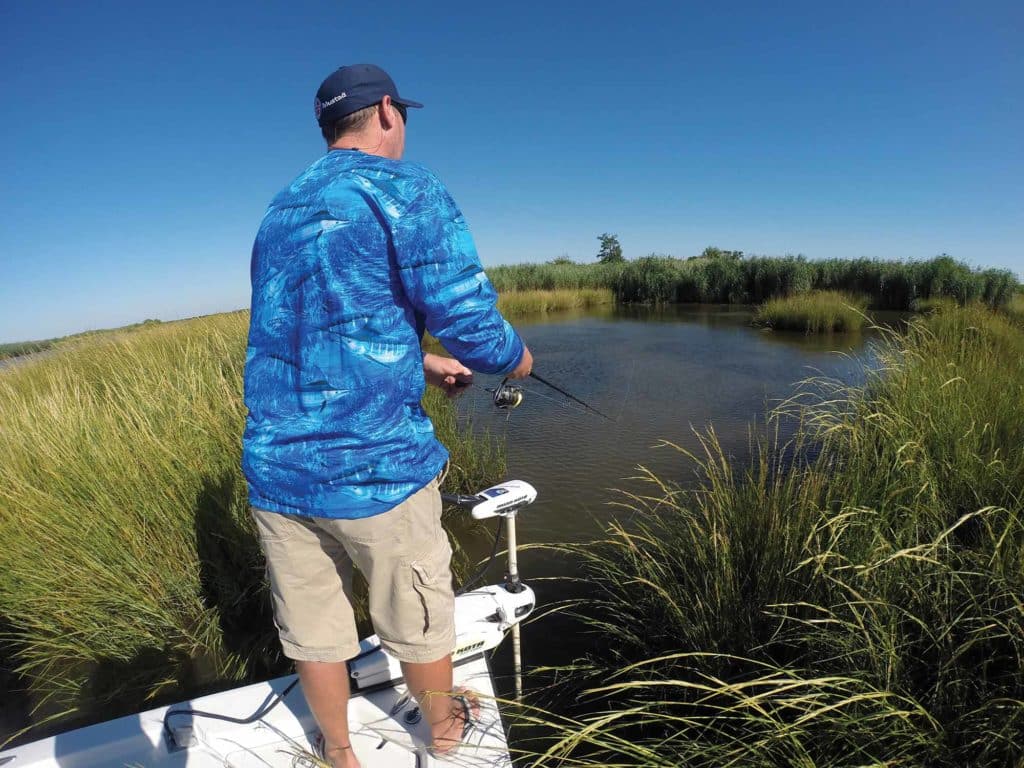
Finding Refuge from Windy Weather on the Water
Experienced anglers certainly know how very important the combination of wind speed and geography can be. It’s a lesson learned early.
As a child, I remember rushing to the window the moment I awoke on Saturday mornings to look at the treetops. No movement in those higher branches meant calm seas; a few rustling leaves was OK, but swaying treetops meant that rousting Dad out of bed would be a wasted effort.
Most open-water outings depend on decent weather conditions, which deteriorate more frequently in winter due to repeated cold fronts. During those months, the Jet Stream tends to push south. Nor’easters develop along the East Coast, and polar air flows south until it collides with warm air from the Gulf of Mexico.
While wind speeds along most of the northern Gulf Coast average 5 to 6 mph during the summer, they build to an average of 9 to 10 mph in winter, according to the National Oceanic and Atmospheric Administration. The Atlantic coast averages 6 to 7 mph during summer and 9 to 10 mph during winter. And in Florida, average winds build from summer’s 7 to 8 mph to winter’s 10 to 12 mph.
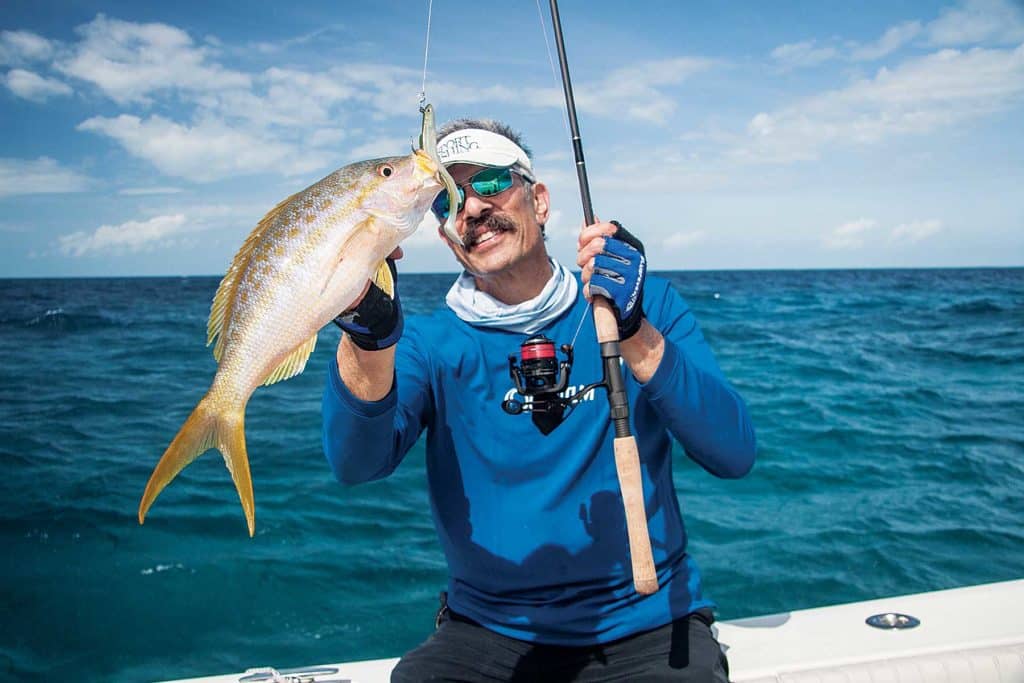
Wind patterns can be somewhat predictable, and we can plan fishing around that. Any East Coast angler, for example, knows that a few calm days in a row often follow the violence of a cold front. But weather patterns have been changing in recent years; when it comes to wind speeds, they appear to be growing stronger over time. According to research performed at Australia’s Swinburne University of Technology and published in the journal Science, wind speeds have increased globally by 5 percent over the past 20 years.
However, a few places in the country offer a perfect combination of geography and prevailing winds. That is, they remain fishable in most or all conditions short of a gale — regardless of the season.
We chose six weather havens that deserve national ranking for both top-notch fishing, inshore and nearshore, and protection from wind and approaching storms.
San Diego Bay is Sheltered from the Wind
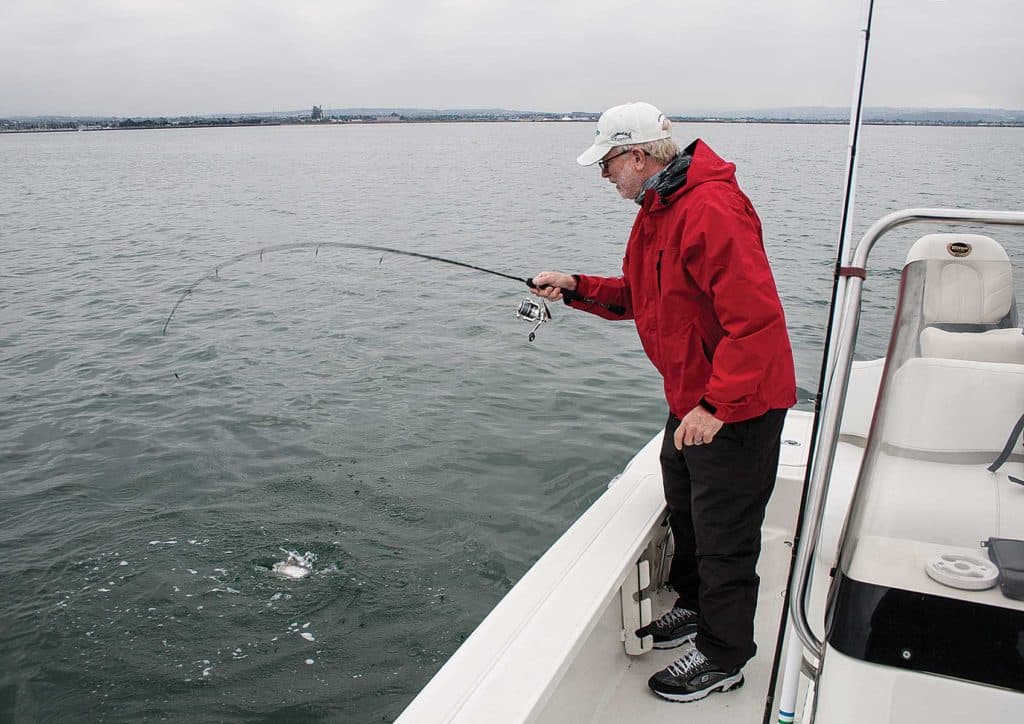
San Diego Bay benefits from a north-south orientation in an area that sees prevailing westerly winds virtually all year long. At just 1 to 3 miles wide, the bay never presents a very long draw over which westbound waves can build.
During winter, though, the bay can be hit by Santa Ana winds. These gusty, dry desert blows, which emanate out of the east, can compress while moving through canyons, and eventually peak at more than 100 mph inland. They’re commonly closer to 20 to 30 mph along the coast, but that’s plenty strong enough to hit anglers where it hurts. All that considered, San Diego Bay still gains a leg up when it comes to finding a lee, thanks to the intervention of man.
“San Diego Bay is 14 miles long and surrounded by land for most of that distance,” says Capt. James Nelson, a San Diego guide dubbed “the fish icon.” “Most of that land is incorporated, and downtown San Diego (on the northeast corner of the bay) has buildings to 497 feet high. This helps protect the bay from wind on most of the days that we would be on the water.”
Just what does Nelson target in San Diego Bay? A surprisingly wide range of species, including spotted bay, sand and calico bass; corvina; croaker; halibut; sharks; and even the vaunted West Coast bonefish.
“This makes San Diego Bay not only one of the best fisheries around, but also a comfortable place to be on a boat,” he says.
Louisiana’s Protection from the Wind
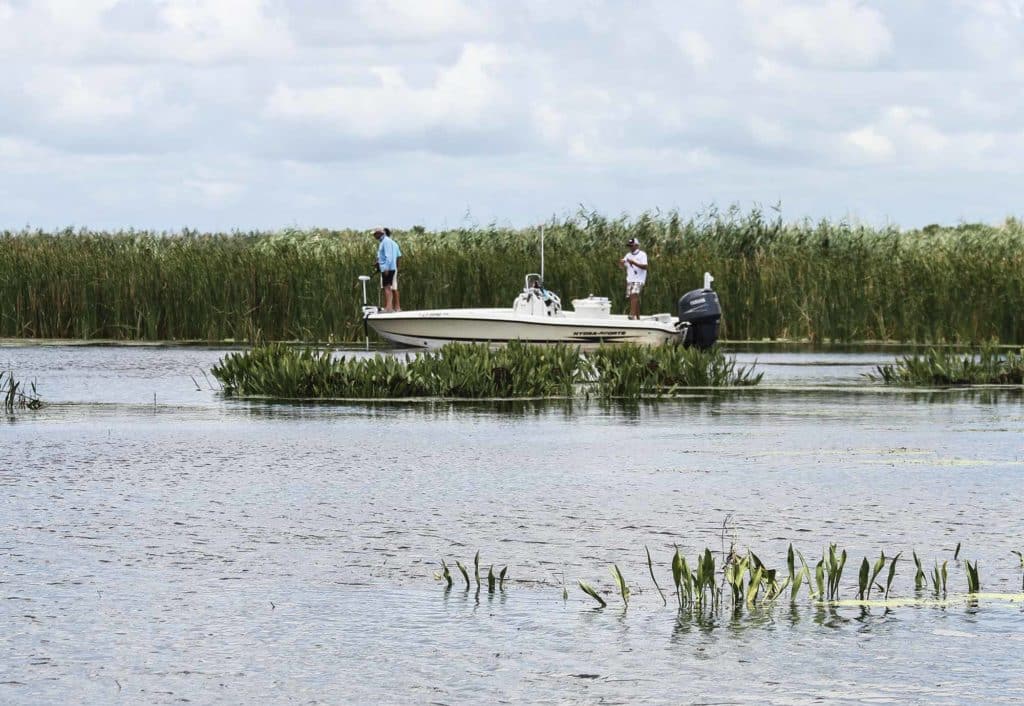
When it comes to twisting, turning waterways with lee shores aplenty, regardless of wind direction, a salt-marsh fishery can be tough to beat. And when it comes to salt-marsh fishing for species such as spotted seatrout, flounder, black drum and especially red drum, the Louisiana coast ranks high on the list.
While the Mississippi River delta offers a plethora of wind-sheltered locations, anglers must consider the way the wind affects fishing in the marshes. “Our area is strongly affected by winds [which pick up in the winter months but commonly peak during the spring], but what wind does is affect the waterways we can access,” says Capt. David Bourgeois, of Big Dog Fishing Charters, in Lafitte, Louisiana, just south of New Orleans. “When winds are strong from the north and west, water is pushed out of the Barataria Basin and into the Gulf of Mexico. During these times, there are plenty of oil-and-gas-field access canals that are productive for fishing, and where we can hide from the wind.
“However, we have to deal with very shallow water and have to be careful not only fishing, but when running to our spots to make sure we don’t hit any usually submerged items or run aground.”
South winds create the opposite effect, pushing water up into the marsh and bayous. “South winds that raise our water levels allow us to fish areas we couldn’t otherwise access, such as ponds, flats and shallow bayous,” he says.
Fishing Key West When Windy
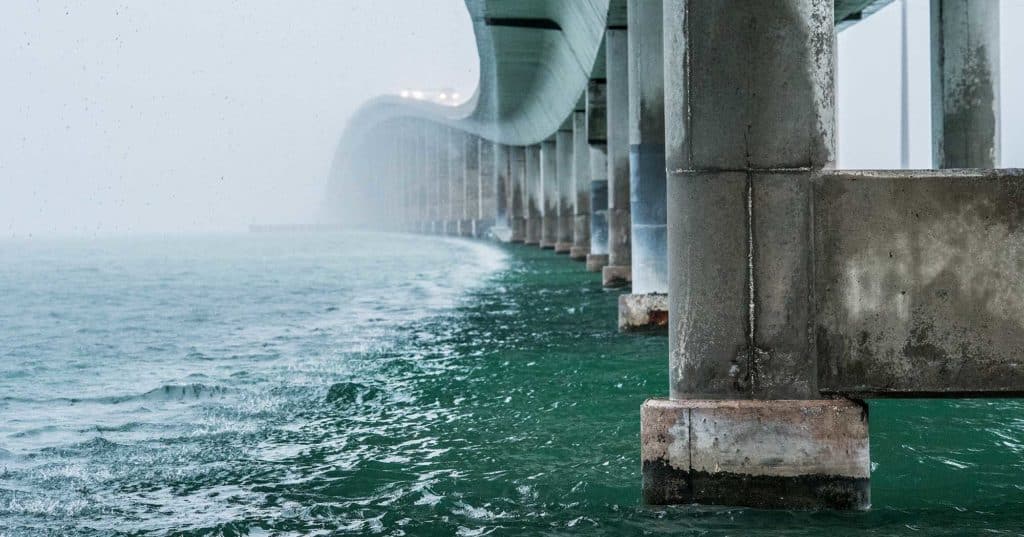
Anglers in Key West — and throughout much of the Keys — benefit from the ability to fish either the Atlantic Ocean or the Gulf of Mexico, depending on conditions. Even when all the surrounding waters roil, captains can tuck behind small islands that block the wind.
“We’re pretty lucky,” says Capt. Rush Maltz, of Odyssea Key West Sportfishing. “In the summer, we have prevailing winds out of the southeast, and in the winter, lots of east and northeast. We also get a lot of cold fronts moving through in the winter, and winds blow at 20 knots or more. But we can almost always find a place to fish.”
When it’s blowing out of the east, and seas in the Atlantic stack up to 6 or 7 feet, Gulf waves might only measure 1 to 3 feet, he explains. “On days the Gulf is unfishable, we might still be able to run offshore in the Atlantic and catch sailfish.
“Sometimes we can stay right in the harbor, where it’s almost always sheltered, and catch tarpon, or maybe permit or cobia, and snapper are always around. You don’t always have to go very far around here to catch fish. As a guide, this is great. While most of the coast might be stuck, we have options.”
This does, of course, affect which fisheries may be targeted on any given day. While sailfish and mahi might be plentiful on the Atlantic side, fishing the Gulf might mean going for grouper or snapper instead. On days with too much bluster for either option, backcountry and flats areas offer species such as tarpon, permit and bonefish. In other words, taking advantage of this weather flexibility means remaining open-minded about target choice.
“Instead of just saying we’re blown out, we change it up,” Maltz says. “We can still have a great day of fishing. And nine out of 10 anglers have no problem with that at all.”
Hide in the Outer Banks from the Wind
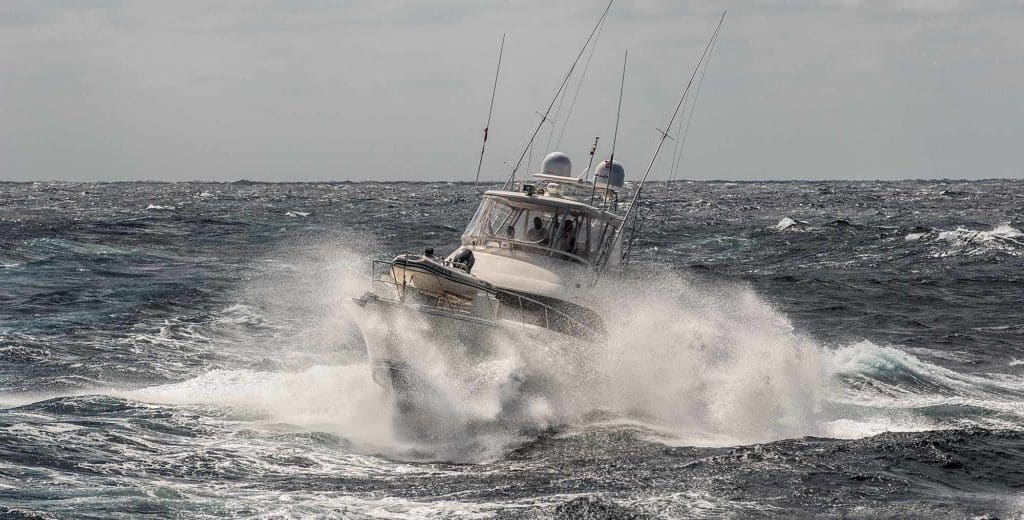
Take one glance at a map of the North Carolina Outer Banks and you can see that whichever way a strong wind blows, anglers can find sheltered waters somewhere in the sounds, bays or along the beach. On an east or west wind, for example, the slot between Roanoke Island and the mainland in Croatan Sound, and between Roanoke and the barrier islands in Roanoke Sound, should be quite protected. If the winds hump out of the north, the waters south of Wanchese should enjoy a lee. And if a southerly riles things up, the waters of Kitty Hawk Bay should remain relatively placid. That shelter can extend, at times, out into the ocean on the northeast or southwest side of Cape Hatteras and the east or west side of Cape Lookout.
Capt. Joey VanDyke, who has mated on offshore boats out of Oregon Inlet and Hatteras and today runs inshore, offshore and bay charters on the 27-foot custom Carolina-style Fingeance, has seen every aspect of how, where and when to alter fishing tactics to keep casting right through a blow.
“We’re very diverse here in the Outer Banks,” he says. “We’re mentally and physically able to change it up at the drop of a hat. From one day to the next, we might go from sight-casting for cobia in the ocean to targeting drum up on the grass flats in the sound. When the wind starts blowing, we have a plan A and a plan B — and a plan C and even a plan D.”
While most anglers happily adapt, some tourists don’t always get it. “We try to explain it to clients; we try to break it down for them and help them understand why the wind can make one area or another, and even a particular type of fishing, less productive,” VanDyke explains. “Take sight-casting for cobia, for example. There are times when the water’s too churned up for that to work from a blow the day before, even though now it’s calm enough to fish for them. But chumming might still be an option.
“Or, we might need to focus on a different species entirely. Sometimes it takes a little while, and sometimes we take them out and let them have a look. But as long as people are willing, we have a very unique opportunity here to find good fishing in most wind conditions, almost year-round.”
Chesapeake Comfort from the Winds
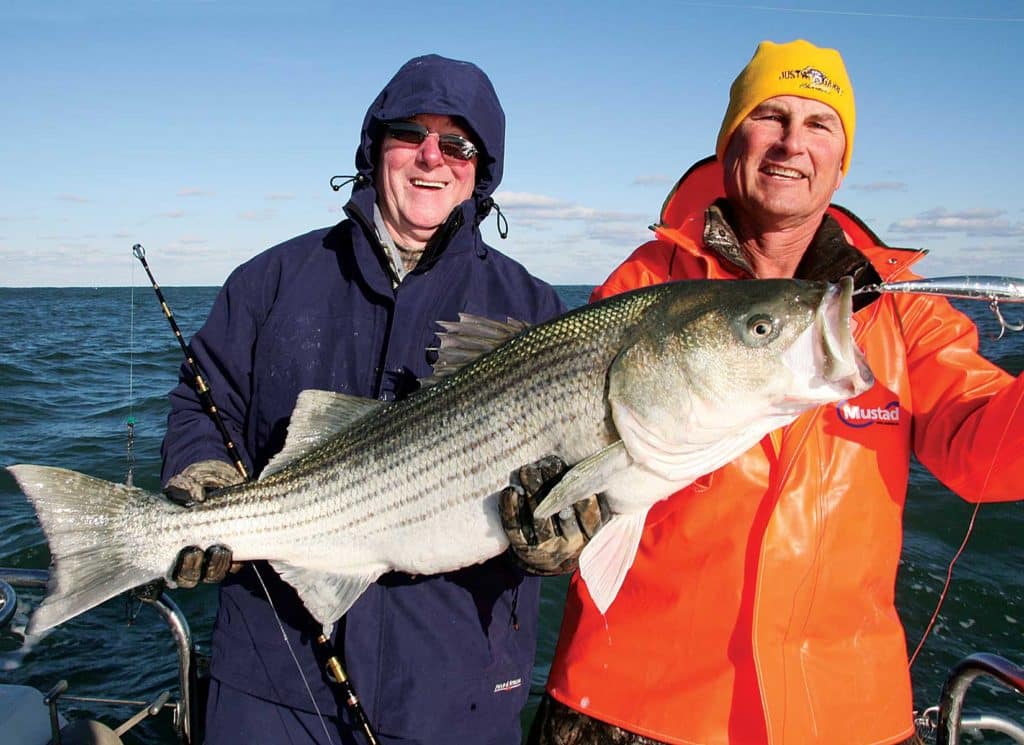
Having fished the Chesapeake Bay my entire life, I’ve taken advantage countless times of its rather erratic shorelines and plentiful tributaries to find a lee regardless of wind direction. But the bay’s combination of shoals and channels means that wind doesn’t need a long reach to create a tight, nearly vertical chop.
A 1-foot chop can be uncomfortable in a small boat. Two-footers can pound out your fillings while running, and roll your boat from side to side like a carnival ride while adrift. If you’re not careful, you might soak your wife in salt spray and earn yourself a punch or two. But no matter the direction the winds blow — even during the winter, when wind direction is unpredictable and you’re quite likely to have a 15-knot breeze — fishable waters can almost always be found in the middle bay at or around the Chesapeake Bay bridges.
Spanning just over 4 miles from the western to eastern shores, the twin spans of the bay bridges feature literally hundreds of pilings, some as long and wide as an 18-wheeler, as well as two artificial islands known as “the rock piles.” The islands not only break the wind but also the waves.
If the wind is blowing out of the east or west, one side of the bay or the other is bound to be relatively calm. And if it’s blowing out of the north or south, one side of the bridge or the other is significantly calmer. When the conditions are fishable but still uncomfortable, you can always take a break in the lee of one of the islands.
Added bonus: The bridges offer some of the best structure in the entire Chesapeake Bay, and quite often, the striped bass fishing here excels. Throughout the year, anglers can pluck school-size stripers to 30 inches from around the pilings by casting jigs on light tackle, live-baiting, or trolling tandem and umbrella rigs up and down the lane between the two bridges.
In early spring and late fall, trophy-size fish migrate in and out of the area. In fact, the largest striper I ever hooked in the Chesapeake struck beneath the east span of the north bridge. We fought it for a solid 20 minutes before it broke 40-pound test with a rod-pumping head-shake, ensuring I’ll always dream of hooking a fish like that again in the shadows of the Chesapeake Bay bridges.
Martha’s Vineyard Variety
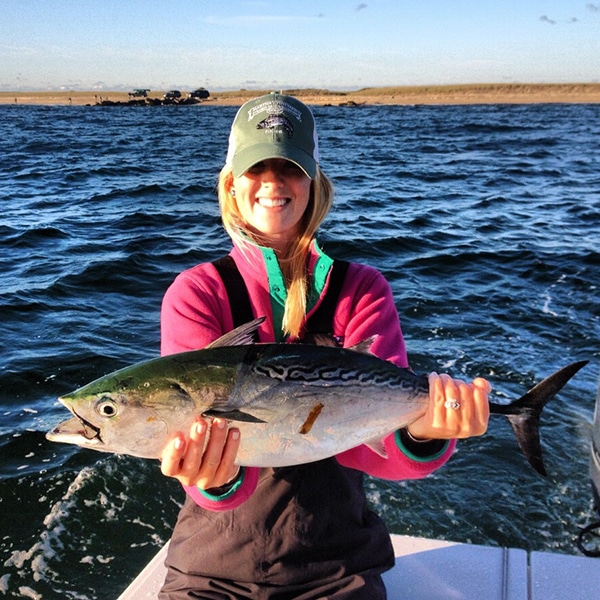
Martha’s Vineyard benefits from a combination of tall wind-breaking bluffs near areas with strong current, numerous nearby islands and a fairly consistent westerly prevailing wind pattern. This adds up to options — lots of options — when the wind blows.
“You can always find a lee, and you can always find a place where there’s wind in your face too,” says Julian Pepper, a senior staff member and 20-year veteran at Larry’s Tackle Shop, the oldest such establishment on the island. “If you’re a fly-fisherman and you need protection from the wind, you can always go somewhere like Chappaquiddick and fish near the bluffs, where there’s also good current and good fishing. Between the sound, the islands and the ocean, there’s almost always a good place to fish.”
While the Vineyard is best known for its striped bass fishery, which starts in May and usually hits full swing in June, in the fall, false albacore can be found close to leeward shores. Even in winter, fish like tautog can be found in waters close enough to the lee to remain protected.
“It’s at its best when you get a blow for a couple of days. That pushes bait in,” Pepper says. “And then the wind turns. You can be in the lee, have clean water and some of the best fishing around.”
Battling the Breeze
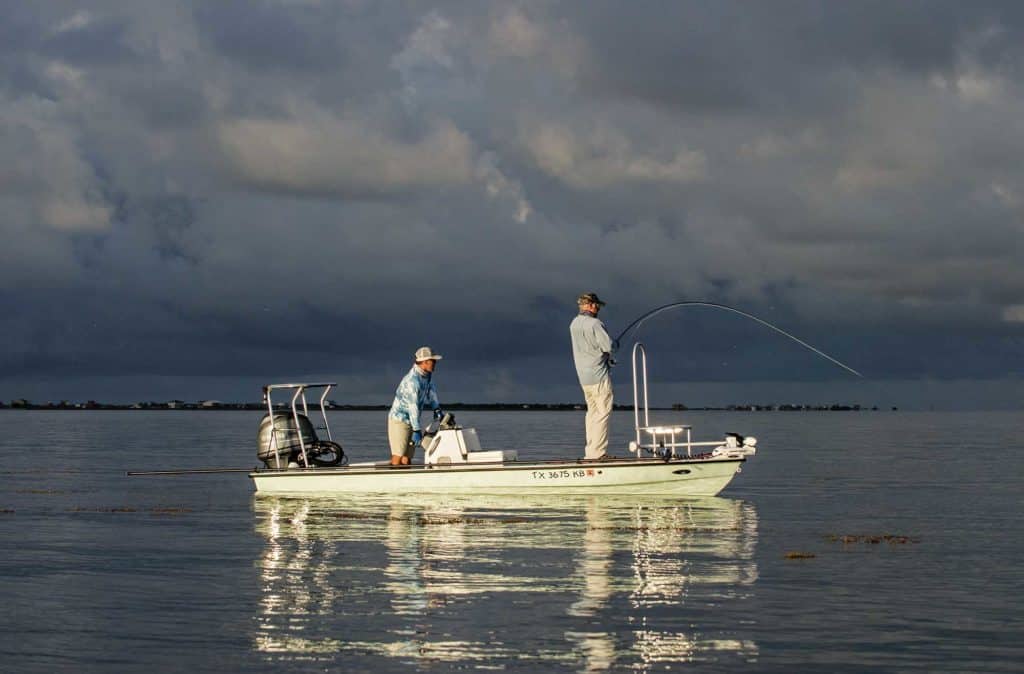
Even in protected waters, strong winds make fishing tough. Casting becomes an issue, trolling lines might be pushed into one another and the wind can blow big bends in your line, reducing the ability to feel a bite. Use these simple tips and tactics to catch more fish in the maelstrom.
When throwing lures or bait, remember to position your boat to allow casting with the wind. If that’s not possible, cast side-armed and low to the water.
When trolling, try to head directly into or directly with the wind. When the breeze hits the boat on its beam, lines are much more likely to blow into one another. If that’s not possible, place your heaviest lures with the most drag on the upwind side of the spread and your lighter lures on the downwind side to keep the light lines from being blown atop the heavier ones.
When fishing topwater in a strong wind, walk the dog with a stickbait rather than choosing a chugger or popper. The more abrupt jerk needed for popping some lures can lead to lots of cartwheeling (and the associated tangles).








